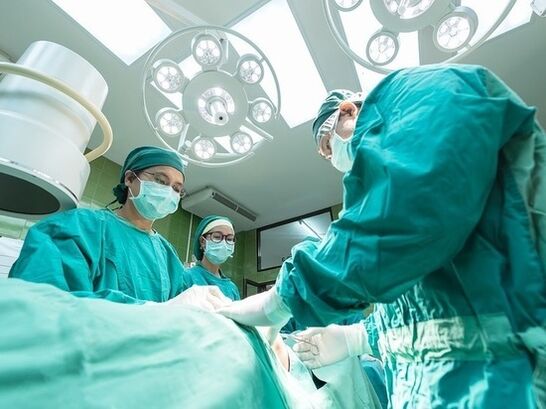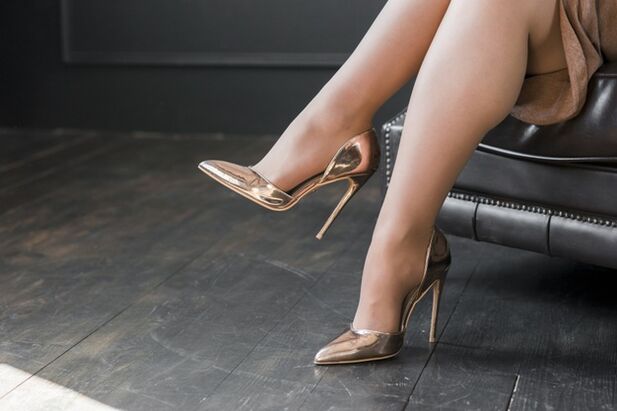Varicose veins from the lower leg or varicose veins in the lower leg - the development of surface veins, accompanied by valve failure and affected blood flow.
This is the most common disease of the peripheral vessels.According to epidemiological data, various forms of the disease are found in 26-28% of women and 10-20% of men from work.
Risk factors for the development of varicose veins
The descendants and their role in the development of varicose veins are not found to be clear confirmation.One of the main counters of the presence of genetic tendencies is the frequency of different varicose diseases in ethnic Africa and their peers emigrating to the United States and the countries of Western Europe.In addition, compared to the inactive clans, the frequency of varicose veins, which does not exceed 0.5%, immigrants have a reliable increase of 10-20%.In this regard, the conclusion is clear about varicose factors of environmental factors, lifestyle and nutrition features.
PregnancyIt is traditionally considered one of the major risk factors for the development of varicose veins, in particular, more often (3-4 times) damage to women.It is generally accepted that the major moments that cause an increase in BCC (circulating blood) and compression of the uterus pregnant retroperitoneal veins.Meanwhile, the results of the epidemiological study showed that only the second pregnancy and thus led to a reliable increase in the frequency of varicose veins of 20-30%.At the same time, the first signs of the disease appear in the first trimester of pregnancy, when a sharp increase in BCC or the increase in pregnant uterus has not yet occurred.
Obesity- Proven risk factors for varicose veins.At the same time, an increase in weight index to 27 kg/m2 and above leads to an increase in the frequency of 33%.
The high frequency of varicose veins in the country -industrial countries are slightly due to nutritional features.High levels of food processing and reduction of vegetable diet -raw and fruit -fruity leads to the deficiency of plant fibers needed for the recurrence of vein walls and chronic constipation, resulting in a permanent increase in intra -bdominal pressure.
VividIt has a significant effect on the development and course of varicose veins.In particular, the adverse effects of long static loads by lifting weights or accommodation without moving in a standing and sitting position have been proven.In Asian countries, more frequent use of seats and seats in European parts lead to reliable improvement (3-4 times) in the frequency of varicose veins than those who traditionally sit in the mat.
SpecialtyParticipate in the pathogenesis of varicose veins.Their role in recent years has increased, due to the use of extensive hormone contraception, the population of hormone replacement therapy during osteoporosis treatment.It has been proven that estrogen and progesterone, as well as their derivatives, reduce the tone of the vein wall due to the gradual destruction of collagen and elastic fibers.
Clinical picture of varicose veins
Varicose veins are an indifference disease with beautiful sex.Varicose veins are average female vein -three times more frequent than men.

Signs of varicose veins are bound by subcutaneous veins, pain, severity in the legs, swelling of the legs and lower legs, fatigue in the legs at the end of the day.Varicose nodes are often exposed to the formation of blood clots and infections.Flbbbitis can develop - inflammation of the blood vessels or thrombophlebitis - inflammation of the blood vessels that are complicated by blood clots.In the course of the veins there is a hard and very painful rope.Skin changes, loss of elasticity and color-it is dense, dark brown.With simple injuries, ulcers occur.A young woman can be a disabled at the age of 40.
These are symptoms that should keep you awake - this is a symptom of varicose veins:
- Sore.The cause of pain in varicose veins is very, very much.Various pain in varicose veins is also very rich:
- The pain of the pulses is hot,
- Night cramps and itching -gatal in the muscles,
- Ill when walking
- Pain along the vein stem,
- General pain and pain in the legs.
- Swelling in the legs.
- Feeling broken and heavy on the feet.
- Skin changes.Initially, the skin became dry, pigmentation appeared - dark skin, covered with "spots" brownish.Then, various dermatitis, eczema and trophic disorders are arranged in the form of bad healing wounds so that the formation of ulcers can accompany these symptoms.
- A complex and lengthy varicose vein that stands over the surface of the scalp and feet, with a cylinder or mixed connection.
- Vascular star (telangioectasia).Yes, people with varicose veins are also included in patients with small veins, as the cause of their appearance is the same.
The earliest stages of varicose veins are very difficult to detect and diagnosis, as in the early stages of the disease there are no major features - varicose veins.And the first and foremost symptoms of varicose veins, such as the sensation of the foot, moderate pain in the legs, increased fatigue, are also found with the early stages of arterial disease, flat feet, lumbar osteochondrosis.
In difficult cases, it is impossible to make the right diagnosis - you need a doctor's consultation or even some experts - phlebologists, neurologists, surgeons and manual therapists.High instrumental diagnostic methods, such as ultrasound or phlebography, will also be needed.
Symptoms -The first symptom of the foot vein, where you can suspect the onset of varicose veins, is an increase in the pattern of the veins on the skin.These defects, as we have said, are most commonly recorded by young women: on their feet or hips they see flowers, which were not there before.There may be no other complaints at the beginning of varicose veins.
And often, the symptoms of early varicose disease precede the appearance of pain and other unpleasant sensations.Often the first "discovery" of the veins is not accompanied by no unpleasant sensation.
The beginning of the development and development of varicose veins has been shown by prominent on the surface of the skinvaricose nodes.One or more.These are the main symptoms of early varicose disease.Varicose nodes can be detected most frequently on the inner surface of the legs or hips.With a walking or prolonged position, the symptoms of such varicose veins are indicated asFatigue, heavy on the feet, a sense of breaking(often - in calves).These symptoms are clearly indicated by prolonged accommodation in a sitting or standing position.There are also pain or acute pain in places of vein (veins), seizures in the calf muscles, especially in the evening, and sometimes at night.
The first sign of dysfunction in its veins is shown andswollen feet until the end of the day.Edema usually occurs in the evening, especially after a prolonged position.After the night's rest, the swelling is completely gone.
Symptoms -Symptoms of varicose development are initially passed quickly, if you rest, especially if you lie down.However, a significant loss or decrease in these symptoms when walking and after night's rest is a characteristic of symptoms of varicose disease.
But varicose veins, if they are not involved, do not retreat,progressive.Over time, the symptoms of varicose veins like thatDark blue intradermal veins, stand out above the surface of the skin and feet and is similar to a group of red grapes.All of these are joinedTurning with pain in the legs and calves, the heat in the legs, the night seizures in the calf muscles, swollen.Gradually joined these symptomsskin changes.At first the skin becomes dry, it becomes dark, the pigment appears on it - the brown spots.A little later that was releasedTrophic disruption: Bad healing wounds as well as ulcers.
SoreThey start to interfere more often, especially in the evening or at night.
Diagnostics
Currently, the main main method for diagnosing varicose veins is:
- Ultrasound Dopplerography.The most common method of the main diagnosis of lower leg disease is today's ultrasound dopplerography.This method is based on the effect of the Doppler, which consists of the fact that the ultrasonic wave that goes through the fabric is reflected in the moving of the blood cells and changes its frequency.Very sensitive sensors, setting these changes, reproducing them with special devices in the form of sound signals that resemble wind sounds, or graphic curves.
- Duplex scans (two -dimensional) allow you to capture the image of the vein on the monitor screen in real time with the blood flow assessment in it.Triplex (three -Dimensional) scans, in addition to the above, allows you to get a blood flow color image.
- Phlebo.Flebography is a radiopaque study of veins, which has, and in some cases, is a diagnostic method that determines to examine patients with veins and, especially in cases of their complications.
Varicose vein treatment

Successful solutions to the problem of treating varicose veins consist of consecutive executions -the following tasks:
- Removal of varicose veins;
- Removal of signs of HVN;
- Prevention of development and relapse of the disease.
How to treat varicose veins:
- Compression therapy;
- Conservative therapy;
- Surgical treatment (phlebectomy);
- Sclerotherapy.
First of all, they try to treat varicose veins in a conservative method.In fact, this is not a method of treating varicose veins.All conservative methods in the "varicose vein treatment" are intended, you first, at the prevention of disease and its complications.Conservative methods are also the only possible therapy if the patient has serious contraindications to other treatment methods or if the patient rejects varicose vein surgery.Radical removal of varicose syndrome is possible only surgery, at the same time, the result of treatment function is very important, which implies the elimination or reduction of HVN manifestations.

Varicose veins should be complex and individual, most often including conservative and surgical treatment.Doctors may only recommend the method of treating varicose veins based on his experience, but the decision is always you























